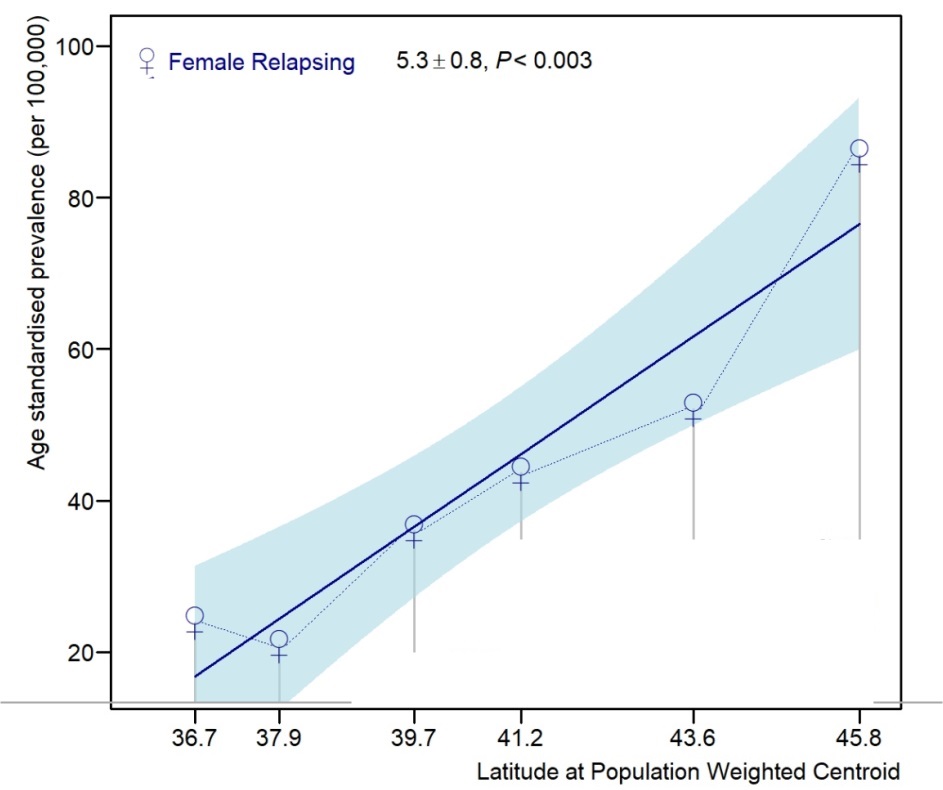Multiple Sclerosis varies with latitude while young
The latitude gradient for multiple sclerosis prevalence is established in the early lifecourse
Brain, awab104, https://doi.org/10.1093/brain/awab104
Clive E Sabel, John F Pearson, Deborah F Mason, Ernest Willoughby, David A Abernethy, Bruce V Taylor
Relapsing MS for females who lived in at a latitude before age 12

Latitudes of New Zealand if NZ were in Europe or the US


📄 Download the PDF from Vitamin D Life
The strongest epidemiological clue that the environment at the population level has a significant impact on the risk of developing multiple sclerosis (MS) is the well-established, and in many instances, increasing latitudinal gradient of prevalence, incidence and mortality globally, with prevalence increasing by up to 10-fold between the equator and 60 degrees North and South . The drivers of this gradient are thought to be environmental with latitude seen as a proxy for ultraviolet radiation and thus vitamin D production, however other factors may also play a role. However several important questions remain unanswered, particularly when in the life course is the gradient established, does lifetime migration mitigate or exacerbate previously reported latitude gradients at location of diagnosis, and do factors such as sex or MS disease phenotype influence the timing or significance of the gradient?
Utilising life time residence calendars collected as part of the New Zealand national MS prevalence study, we constructed lifetime latitudinal gradients for MS from birth to prevalence day 2006 taking into account migration internally and externally and then analysed by sex and MS clinical course phenotype. 2127 of 2917 people living in NZ on prevalence day 7 March 2006 with MS completed the life course questionnaire and of these 1587 were born in NZ. All cohorts and sub cohorts were representative of the overall MS population in NZ on prevalence day.
We found that the prevalence gradient was present at birth and was in fact stronger than at census day, and the slope of the gradient persisted until the age of 12 before gradually declining. We found that internal and external migration into NZ had little if any effect on the gradient except to decrease the significance of the gradient somewhat. Finally, we found as we had reported previously that the lifetime prevalence gradients were largely driven by females with relapse onset MS.
These findings confirm for the first time the importance of early life environmental exposures in the risk of MS indicating strongly that exposures as early as in utero and at birth drive the latitudinal gradient. Consequently, prevention studies should be focussed on high risk individuals and populations from the earliest possible time points especially, when appropriate, on females.
